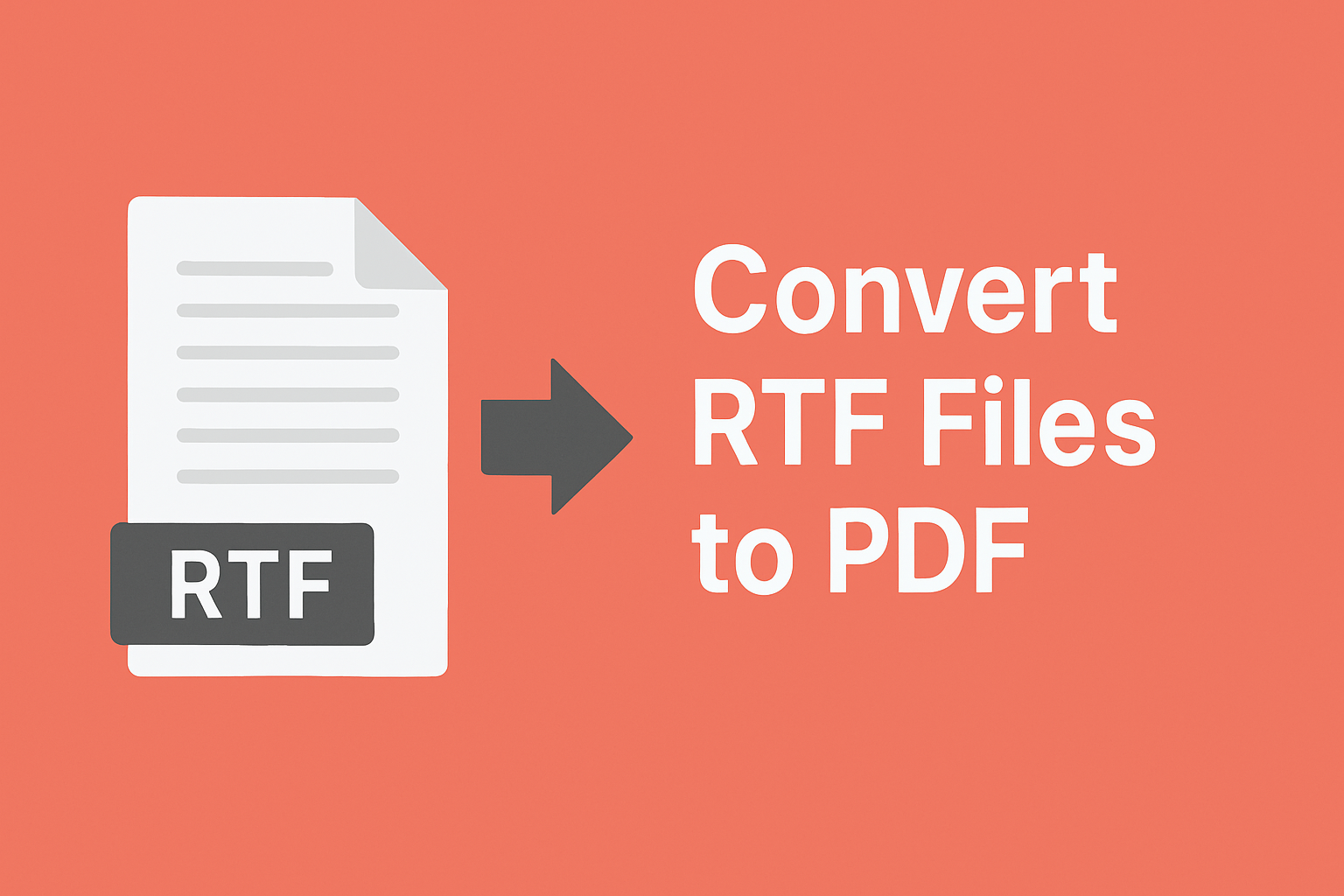
Converting RTF Files to PDF: Why It Matters and How to Do It Effectively
Posted on June 8, 2025 by monfield
Rich Text Format (RTF) is a long-standing document standard used for compatibility between word processors, especially in Windows environments. While RTF is a versatile and readable format, it lacks many of the features that make PDF the preferred choice for professional document exchange. Converting RTF to PDF helps ensure consistent formatting, better accessibility, and stronger compatibility across platforms.
In this article, we’ll break down when and why you should convert RTF files to PDF, the key differences between the formats, and how to reliably handle the conversion using the RTF to PDF Converter on ConverterToolset.com.
Why Convert RTF to PDF?
While RTF files are useful for sharing editable content between different word processing applications, they are not well-suited for finalized, read-only, or presentation-ready documents. PDFs are widely used in legal, academic, professional, and government settings for a reason—they’re consistent, portable, and secure.
Key Benefits of Converting to PDF:
- Preserve formatting across devices: RTF formatting may shift depending on the software used. PDF formatting is locked.
- Better security: PDFs allow password protection, printing restrictions, and editing controls.
- Universal accessibility: PDF files open reliably on virtually all operating systems and devices.
- Professional presentation: PDFs look consistent in print and digital form, making them ideal for reports, applications, and official communication.
- Compact size with embedded fonts: PDF can package fonts and images efficiently without dependency on external systems.
RTF vs. PDF: Format Comparison
| Feature | RTF | |
|---|---|---|
| Purpose | Editable cross-platform text format | Finalized document distribution |
| Editing | Fully editable | Editing restricted (if configured) |
| Formatting Consistency | May vary across platforms | Fixed layout |
| Multimedia Support | Limited | Supports images, links, layers |
| Security | Minimal | Strong encryption and permissions |
| Use Cases | Drafts, notes, cross-platform docs | Legal docs, forms, publishing |
Use Cases for RTF to PDF Conversion
Submitting Documents to External Parties
When submitting forms, essays, or letters to institutions, converting to PDF ensures they are displayed exactly as you intended.
Archiving Contracts or Reports
For long-term storage, PDF ensures formatting won’t change due to software updates or operating system differences.
Sending Documents for Printing
Printers and publishers prefer PDFs because of their fixed layouts, embedded fonts, and high-resolution image support.
Compliance in Legal or Government Work
PDF is often a requirement for official documentation due to its auditability and security options.
How to Convert RTF Files to PDF
While word processors like Microsoft Word offer a built-in “Save As PDF” option, that approach isn’t always available—especially if you’re on a mobile device or using a non-Microsoft editor. A faster, universal solution is to use an online conversion tool.
The RTF to PDF Converter at ConverterToolset.com provides a fast, no-install way to turn your RTF documents into clean, professionally formatted PDFs.
Simple Steps to Convert:
- Open the Converter Page: Go to the RTF to PDF tool on ConverterToolset.com.
- Upload Your RTF File: Use the drag-and-drop feature or browse to select your file.
- Wait for Processing: The file is converted instantly to PDF.
- Download Your PDF: Save the converted document to your device.
Tips for Better RTF to PDF Results
- Clean Up Your RTF Before Converting: Remove unnecessary spacing, font inconsistencies, or metadata.
- Use Standard Fonts: Choose fonts like Arial, Times New Roman, or Calibri for consistent rendering.
- Avoid Embedded Objects: Tables and images are fine, but embedded OLE objects may not convert correctly.
- Check Page Layout: Ensure margins, headers, and footers are properly defined before conversion.
Automating RTF to PDF Conversion
If you’re handling frequent document generation, such as generating letters or forms from templates, converting RTF to PDF programmatically might be part of your workflow. For batch or repeat conversions, desktop tools or document processing libraries like LibreOffice, pandoc, or wkhtmltopdf are suitable.
But for most use cases—including personal use, one-off conversions, or casual document preparation—the RTF to PDF tool is the most accessible and user-friendly solution.
Summary
RTF files are convenient for drafting and cross-platform editing, but PDF is the format of choice when you need reliable presentation, strong security, and universal compatibility. Converting from RTF to PDF helps protect your layout, polish your content, and ensure it’s seen exactly as intended by others.
Use the RTF to PDF Converter to transform your documents quickly and accurately—whether you’re preparing a formal submission, preserving content for archiving, or simply sharing a clean, professional version of your work.